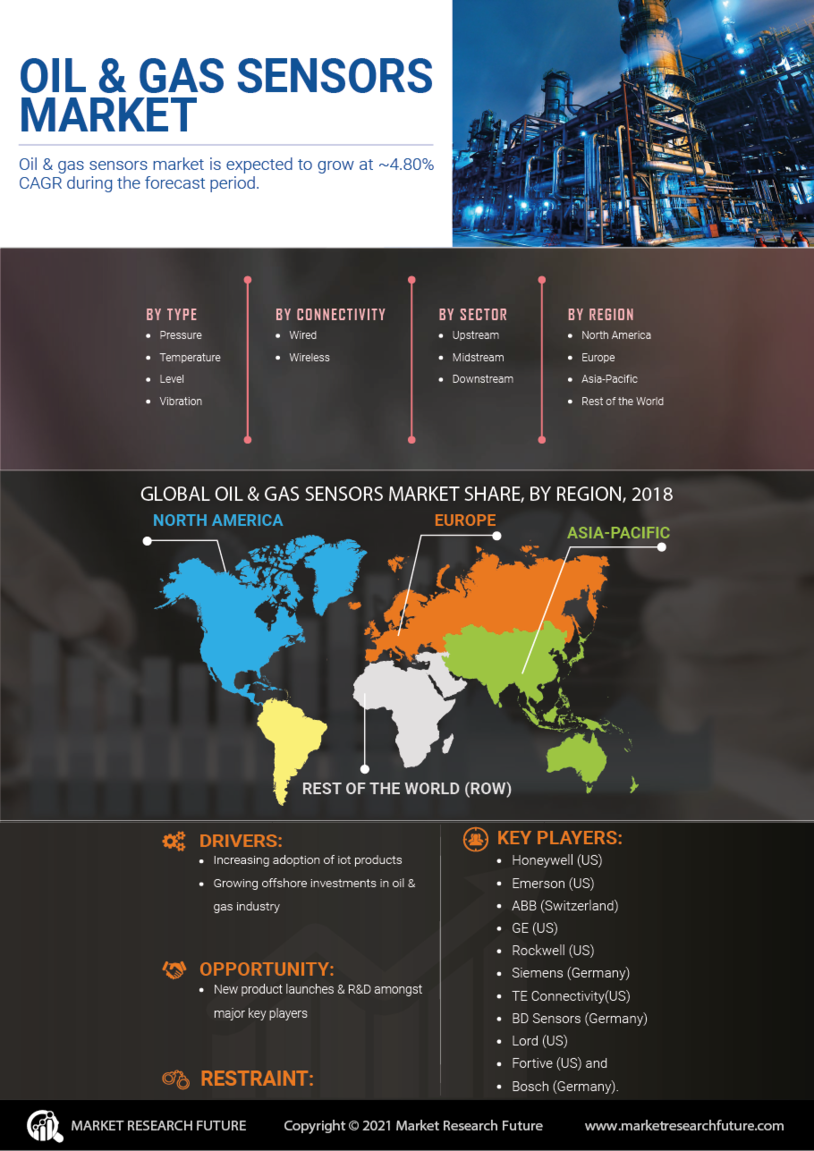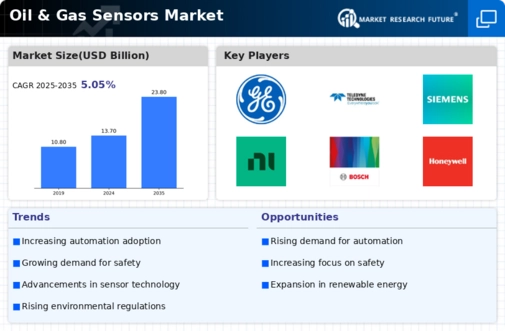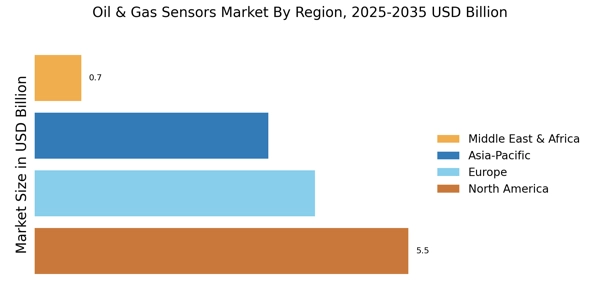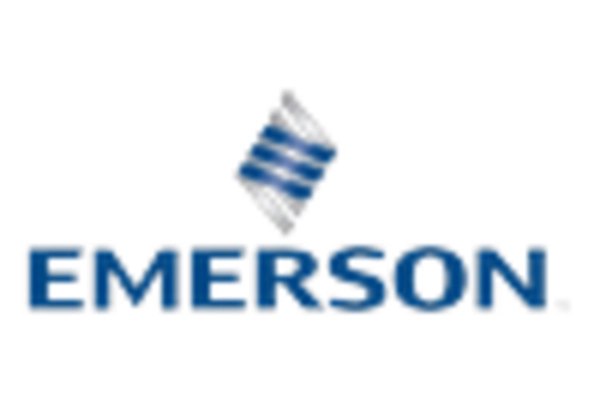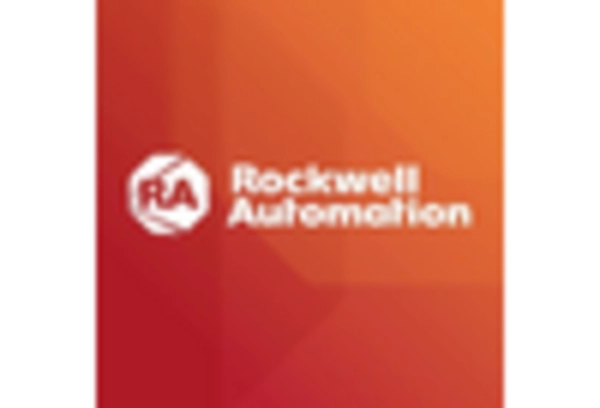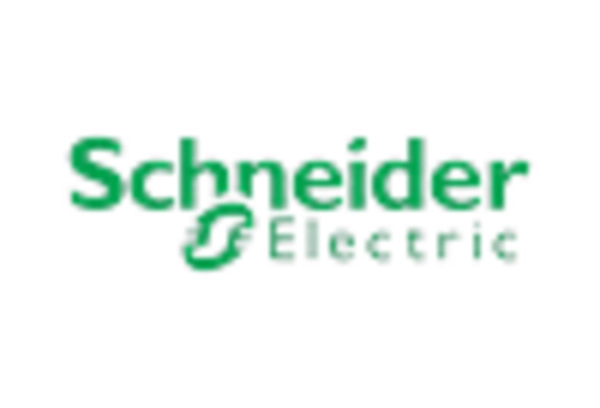Growing Focus on Operational Efficiency
The Oil & Gas Sensors Market is significantly influenced by the growing focus on operational efficiency. Companies are increasingly adopting sensor technologies to streamline processes, reduce costs, and enhance productivity. By utilizing advanced sensors, organizations can monitor equipment performance, detect anomalies, and implement predictive maintenance strategies. This proactive approach not only minimizes unplanned downtime but also extends the lifespan of critical assets. The market is projected to expand as organizations recognize the value of investing in sensor technologies to achieve operational excellence, with an expected growth rate of 5.5% over the next few years.
Expansion of Oil and Gas Exploration Activities
The Oil & Gas Sensors Market is witnessing growth due to the expansion of oil and gas exploration activities. As new reserves are discovered and extraction techniques evolve, there is an increasing need for advanced sensor technologies to monitor drilling operations and ensure safety. The rise in exploration activities, particularly in offshore and remote locations, necessitates the deployment of robust sensor systems capable of withstanding harsh conditions. This trend is expected to drive the market forward, with a projected growth rate of around 6.8% in the coming years, as companies seek to enhance their operational capabilities in challenging environments.
Rising Demand for Safety and Monitoring Solutions
The Oil & Gas Sensors Market is experiencing a notable increase in demand for safety and monitoring solutions. This trend is largely driven by the need to enhance operational safety and minimize risks associated with oil and gas extraction and processing. Regulatory bodies are imposing stricter safety standards, compelling companies to invest in advanced sensor technologies. The market for safety sensors is projected to grow at a compound annual growth rate of approximately 6.5% over the next five years. This growth is indicative of the industry's commitment to ensuring worker safety and environmental protection, thereby fostering a more sustainable operational framework.
Technological Advancements in Sensor Technologies
Technological advancements are playing a pivotal role in shaping the Oil & Gas Sensors Market. Innovations such as wireless sensor networks, smart sensors, and advanced data analytics are enhancing the efficiency and accuracy of monitoring systems. These technologies enable real-time data collection and analysis, which is crucial for optimizing operations and reducing downtime. The integration of artificial intelligence and machine learning into sensor systems is expected to further revolutionize the industry. As a result, the market is anticipated to witness a growth rate of around 7% annually, reflecting the increasing reliance on sophisticated sensor technologies for operational excellence.
Increasing Environmental Regulations and Compliance
The Oil & Gas Sensors Market is being shaped by the increasing environmental regulations and compliance requirements. Governments and regulatory agencies are enforcing stringent measures to mitigate the environmental impact of oil and gas operations. This has led to a heightened demand for sensors that can monitor emissions, leaks, and other environmental parameters. Companies are compelled to adopt advanced sensor technologies to ensure compliance with these regulations, thereby avoiding hefty fines and reputational damage. The market for environmental monitoring sensors is expected to grow at a rate of approximately 6% annually, reflecting the industry's commitment to sustainable practices.
